The post Book: Bhagavad Gita Concordance appeared first on Integral Yoga® Magazine.
]]>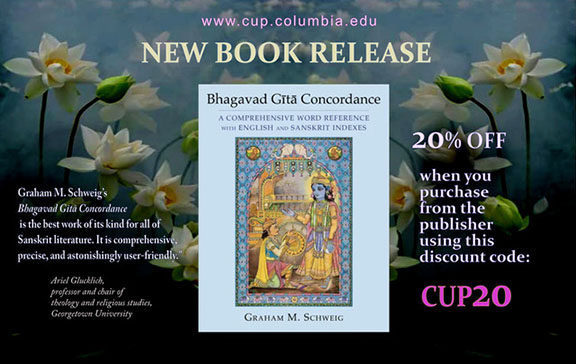 Dr. Graham Schweig’s new book, Bhagavad Gītā Concordance: present the first comprehensive and accessible concordance of the Bhagavad Gītā, the concordance lists every word of the original, noting all its locations and instances within the text, along with related words. It is accompanied by various supportive references, including Sanskrit and English indexes. The concordance can be linked with any translation, giving readers in-depth access to the Sanskrit text.
Dr. Graham Schweig’s new book, Bhagavad Gītā Concordance: present the first comprehensive and accessible concordance of the Bhagavad Gītā, the concordance lists every word of the original, noting all its locations and instances within the text, along with related words. It is accompanied by various supportive references, including Sanskrit and English indexes. The concordance can be linked with any translation, giving readers in-depth access to the Sanskrit text.
This book is designed for those with little or no knowledge of Sanskrit as well as those familiar with the original text. It allows readers to gain a greater reach into the Bhagavad Gītā and achieve a deeper understanding of its ideas, facilitating nuanced analyses of the text and its language. It is an essential reference for scholars, teachers, students, and other readers interested in India’s spiritual classics.
For a limited time, Columbia University Press is offering a 20% discount when ordering here.
The post Book: Bhagavad Gita Concordance appeared first on Integral Yoga® Magazine.
]]>The post The Eternal Nature of the Soul: A Journey in the Bhagavad Gita appeared first on Integral Yoga® Magazine.
]]>
Photo: Cover of NIKUNJA’s Album.
In her most recent album, The Eternal Nature of the Soul, Bhagavad Gita Chapter 2, yogi and musical artist NIKUNJA sings the slokas of chapter 2 in English. The album, awash with inspirational orchestration accompanying NIKUNJA’s ethereal voice, may be streamed and accompanying videos are available on her YouTube channel. In chapter 2 of the Gita, she found the inspiration she’s wants to share with the world through Yoga and her artistry. She talks about this here:
Though Yoga is frequently recognized as a physical regimen, many are increasingly drawn to the quality of peace and meaning it can bring to one’s life and to the world. However, many also don’t have access to the deeper teachings in Yoga which includes much more than physical exercise. Due to the mainstream broadcasting only a fraction of this multifaceted holistic system, the full potential Yoga has for contributing immensely to the positive evolution of humanity is diluted.
With the world currently facing many challenges, an authentic understanding of Yoga beyond just a physical exercise has become more and more relevant for these times. The Bhagavad Gita is one such yogic source of ancient, universal knowledge, which reveals a practical process for awakening through this multifaceted system of Yoga. It has been recognized as one of the most honored yogic scriptures around the world through notable figures like, Mahatma Gandhi, Henry David Thoreau, Joseph Campbell, Herman Hesse, Ralph Waldo Emerson, Carl Jung and more…
Many people rarely make it beyond the confusion, doubt, and questions the spiritual warrior faces, like Arjuna in chapter one. But those sincere ones who have the humility to acknowledge that they don’t know, have taken a critical step in being ready to receive the Divine Song.
In Bhagavad Gita, Chapter 2, Arjuna has taken this step, and thus, the Gita begins with a smile on Krishna’s face. This smile represents the mystery and availability of Divine Wisdom awaiting our attentiveness. When the timing is right, all can be given. Arjuna has simply taken the first step by arriving to a point of surrender, taking refuge under the guidance of the master with higher knowledge. And yet, soon after, he still says he ‘will not fight.’
The same happens to so many of us. We set forth on our spiritual quest with high expectations. But soon after, we give up, we walk away, we look for something new. In this, we see Arjuna has not fully surrendered yet, and will continue with his process throughout each chapter. Krishna, God incarnate, the voice of Divine Wisdom, is aware of Arjuna’s predicament and continues teaching him, meeting him where he is at according to his level of readiness.
This progresses throughout the teachings of the various Yogas. Chapter two is essentially a summary of the entire Gita which is expanded on in greater detail throughout the next 17 chapters. At the core, Sankhya Yoga expounds upon the eternal nature of the soul, which in this context is called Ātma (Sanskrit for Self or Soul). With this philosophical understanding, Krishna asks Arjuna to embrace his dharma (right way of living/virtuous duty) and endure the hardships. In time, and with experience, the transformation will unfold.
“My life has been full of external tragedies and if they have not left any visible effect on me, I owe it to the teaching of the Bhagavad Gita…
To one who reads the spirit of the Gita, it teaches the secret of nonviolence,
the secret of realizing the true Self through the physical body.” –Mahatma Gandhi
“In the morning I bathe my intellect in the stupendous and cosmogonal philosophy of the Bhagavad Gita,
in comparison with which our modern world and its literature seem puny and trivial.” –Henry David Thoreau
About the Author:
 Meditation facilitator, devotional artist, music composer, and vocalist, NIKUNJA first started practicing Yoga and meditation at 15 years old and began instructing at 19. The wisdom of yogic science revolutionized her life amidst great challenges. This gave her the motivation at that young age to devote herself completely to this work for the welfare of all. Combining her passion and background in the arts, along with 14 dedicated years on the journey of awakening, the Bhagavad Gita project (given by her spiritual teacher Paramahamsa Vishwananda) has become the perfect representation of this journey. Listen to the album here. More info about NIKUNJA here.
Meditation facilitator, devotional artist, music composer, and vocalist, NIKUNJA first started practicing Yoga and meditation at 15 years old and began instructing at 19. The wisdom of yogic science revolutionized her life amidst great challenges. This gave her the motivation at that young age to devote herself completely to this work for the welfare of all. Combining her passion and background in the arts, along with 14 dedicated years on the journey of awakening, the Bhagavad Gita project (given by her spiritual teacher Paramahamsa Vishwananda) has become the perfect representation of this journey. Listen to the album here. More info about NIKUNJA here.
The post The Eternal Nature of the Soul: A Journey in the Bhagavad Gita appeared first on Integral Yoga® Magazine.
]]>The post BOOK: “Woodstock – A Spiritual Moment in Time” appeared first on Integral Yoga® Magazine.
]]>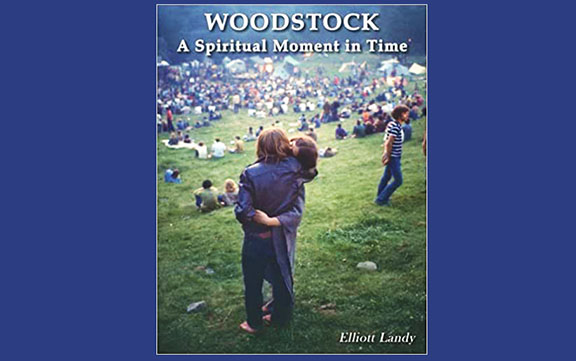 In this latest book from Woodstock Festival photographer Elliott Landy, Woodstock: A Spiritual Moment in Time, is the first of a series of personal short books featuring Landy’s photographs, both the well known, music related ones from the Sixties and other genres of photos he has taken over the years, most never before published in book form. This book includes some of Landy’s favorite Woodstock Festival photographs. However, most importantly this contains new essays and interviews describing the underlying spiritual essence of the event and explaining the concept of the Aquarian Age, of which the Woodstock Festival was a harbinger.
In this latest book from Woodstock Festival photographer Elliott Landy, Woodstock: A Spiritual Moment in Time, is the first of a series of personal short books featuring Landy’s photographs, both the well known, music related ones from the Sixties and other genres of photos he has taken over the years, most never before published in book form. This book includes some of Landy’s favorite Woodstock Festival photographs. However, most importantly this contains new essays and interviews describing the underlying spiritual essence of the event and explaining the concept of the Aquarian Age, of which the Woodstock Festival was a harbinger.
Landy took one of the most iconic photos, which Landy includes in this book, of Swami Satchidananda opening the Festival with his spiritual message of peace and hope.
The post BOOK: “Woodstock – A Spiritual Moment in Time” appeared first on Integral Yoga® Magazine.
]]>The post Recognizing a Satguru appeared first on Integral Yoga® Magazine.
]]> To know a Satguru you should know how a Satguru would be. That’s what Arjuna asked of Sri Krishna in the Bhagavad Gita: “How am I to know a person of steady wisdom (sthitaprajna)?” Arjuna then asked Sri Krishna to describe how such a person would walk, how they would talk, how they would act. If you want to know an orange, you should know what an orange is, how it would look, or at least what to look for.
To know a Satguru you should know how a Satguru would be. That’s what Arjuna asked of Sri Krishna in the Bhagavad Gita: “How am I to know a person of steady wisdom (sthitaprajna)?” Arjuna then asked Sri Krishna to describe how such a person would walk, how they would talk, how they would act. If you want to know an orange, you should know what an orange is, how it would look, or at least what to look for.
If you read the Bhagavad Gita, second chapter, last 20 verses or the 12th chapter, you will find the guidelines on what to look for. Don’t be surprised if it doesn’t say, “Look for a long white beard, or someone who can sit behind a microphone and give quotation after quotation from all the scriptures of the world religions, or someone who is fluent in Sanskrit language, or the one who can sing bhajans beautifully, or the one who would build a lot of temples.
None of these things are the qualifications of the Satguru according to the scriptures and sacred texts. What do those say? They say to look for the one with tranquility in their life, with steadiness of mind. Are they always steady? Are they always balanced? Look for that. What is meant by balanced?
It means they have no ups and downs; they are a level‑headed person who doesn’t swing to extremes. They don’t get depressed one moment by a loss or by somebody talking negatively about them. They don’t get excited when someone comes and puts a garland around their neck. They are balanced in relation to the dualities: pleasure, pain, profit, loss, praise, blame, and so on. They see the dualities, even if the differences in life, but they are not affected by them because they know that everything and everyone is necessary in this world.
No one is their “super special” friend; nobody is their foe. They treat everybody equally. Ten people may come and fall at a Satguru’s feet and say, “We want to take you as our Guru.” The Satguru doesn’t get excited over it. The next day 20 people might leave their ashram and they accept that because people come and people go; things come and things go. When there is a coming, there is a going. The Satguru remains balanced in the midst of all these comings and goings. That is what you call steadiness of mind or tranquility.
So, these are the things you should look for rather than superficial things. Look for the important qualities.
The post Recognizing a Satguru appeared first on Integral Yoga® Magazine.
]]>The post Karma Yoga: Yoga of Action appeared first on Integral Yoga® Magazine.
]]>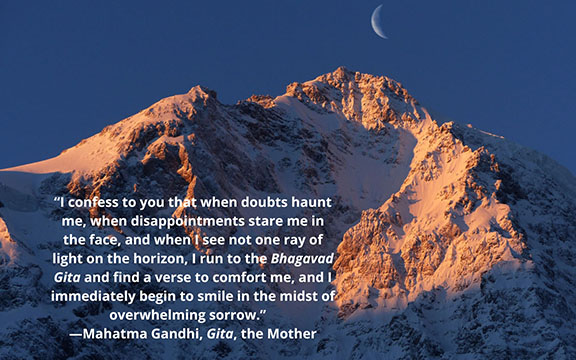 The Himalayas are indeed a crown and spread their victory flag in the sky. The Indian Ocean, in the south, acts as though it washes the feet of the emperor. In between, a thriving sun of culture has been shining for thousands of years over the waves of the Ganga and Yamuna—the divine sun of Sanatana Dharma (Eternal Truth). This cultural beacon has lit the world for millennia. Literature, architecture, beauty, songs, music and dance combine to form the three spiritual pillars of this grand culture: Scriptures, saints, and temples. They are the main reason why it is still alive after so long.
The Himalayas are indeed a crown and spread their victory flag in the sky. The Indian Ocean, in the south, acts as though it washes the feet of the emperor. In between, a thriving sun of culture has been shining for thousands of years over the waves of the Ganga and Yamuna—the divine sun of Sanatana Dharma (Eternal Truth). This cultural beacon has lit the world for millennia. Literature, architecture, beauty, songs, music and dance combine to form the three spiritual pillars of this grand culture: Scriptures, saints, and temples. They are the main reason why it is still alive after so long.
There are many spiritual texts in India, but Shrimad Bhagavad Gita is one of the central Hindu sacred and philosophical texts. It is a national treasure. So great is it, that it is promoted on a large scale, not only in India but all over the world too. Bhagavad Gita is written in Sanskrit and has been translated into every language. Though it is a scripture of Hinduism, it is accepted by all the religions of the world because of its practical and universal teachings. It is said in Gita, “Jnatva Sastravidhanoktam Karma Kartumiharhasi,” which means, Having understood what is stated in the scriptures, act accordingly. If one can really understand what is taught, one can use it in practical fruitfulness in everyday life.
The Bhagavad Gita is the real voice of Sri Krishna. It was spoken in the middle of the battlefield of Mahabharata. The 700-verse scripture is a part of an epic, which recounts the events of an ancient war that occurred at Kurukshetra. It is a conversation between Shri Krishna and Prince Arjuna. Arjuna was in a torn between two contradictory paths of duty due to the ethics and duty (dharma): his cousins, uncles and close friends were fighting on the opposing side. A person who has adopted asceticism (sannyasa), given up worldly desires and prejudices or self-centered weaknesses is different whereas, a person who lives in society and has to do their duties with righteousness and morality often finds themselves in these situations. Under the guidance of Sri Krishna, Arjuna changed his perspective toward life. He was reminded of his duty (dharma).
If a person is not motivated by the desire to acquire the knowledge of a science, they are unfit to study that subject and explaining that particular science is like pouring water on an obverse vessel. Similarly, the teachings of karma (right action) are given to a person who is inspired with a desire of knowing how to perform the right action while leading a life in this world.
For instance, if a person gets stuck in a difficult situation and the science they have learned from rote learning hasn’t helped them to get over it, it is of no use. Therefore, good teachers at first ascertain whether or not the disciple has been inspired by knowledge. If there is no such desire they need to awaken the desire for knowledge.
Arjuna was in a dilemma about his duty and he was ready to give up the war and renounce the world. He was not satisfied by ordinary arguments of abandoning duty and acting weakly. Shri Krishna taught him the science of Karma Yoga. The doubt Arjuna had was not groundless. Today we come across both big and small difficulties in our day-to-day life when considering what to do or what not to do. We all can profit by the practice of Karma Yoga as taught in the Bhagavad Gita.
The word karma comes from the root “kr” which means doing or activity. All the actions that one performs like eating, drinking, sleeping, walking, meditating, desiring, deciding, etc., are all included in the word karma as used in Bhagavad Gita, whether these actions are bodily, vocal, or mental.
The word Yoga is a complicated word. Today, Yoga means physical postures (asanas) or breathing practices. The meaning of this word is not the same in Bhagavad Gita. The word itself comes from “yuj” meaning to join and its root meaning is the state of union. Karma Yoga is a system of ethics intended to help the practitioner realize their union with the Divine; to attain the freedom that comes through unselfishness and by good works. One need not believe in doctrine, ask what a soul is, or even think of metaphysics. If a person has the aim to lead a selfless life, then every moment of their life will be filled with the joy of Oneness. As Swami Satchidananda often said, “The dedicated ever enjoy supreme peace and joy. Therefore, live only to serve.”
About the Author:
 Shweta Goyal is a teacher and a motivational speaker in Australia. Her journey with spirituality started when she faced certain difficulties in her personal life, the answers for which she was unable to find in the scientific world. Having inherited the values of Vedas from her parents, she started reading Vedic history and her perspective toward the same problems that had been bothering her changed, providing her the much-needed peace of mind. Then she realized that the path of spirituality starts where modern science stops giving answers. She decided to go in-depth into the Indian scriptures and it was the Bhagavad Gita that showed her the way to lead her life.
Shweta Goyal is a teacher and a motivational speaker in Australia. Her journey with spirituality started when she faced certain difficulties in her personal life, the answers for which she was unable to find in the scientific world. Having inherited the values of Vedas from her parents, she started reading Vedic history and her perspective toward the same problems that had been bothering her changed, providing her the much-needed peace of mind. Then she realized that the path of spirituality starts where modern science stops giving answers. She decided to go in-depth into the Indian scriptures and it was the Bhagavad Gita that showed her the way to lead her life.
The post Karma Yoga: Yoga of Action appeared first on Integral Yoga® Magazine.
]]>The post “The Bhagavad Gita: A Study” – New Video Series appeared first on Integral Yoga® Magazine.
]]>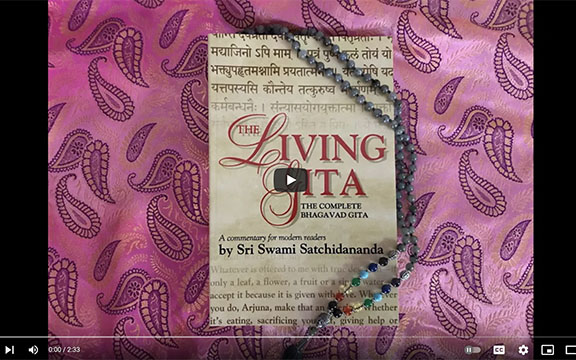 “The Bhagavad Gita: A Study” is a series of weekly free talks given by Nalanie Harilela Chellaram in which she takes an in-depth look at this ancient Hindu scripture and its application and relevance to the world of today. Utilizing the book, The Living Gita: The Complete Bhagavad Gita by Sri Swami Satchidananda, Nalanieji will go through each of the slokas of this foundational Yoga text. Nalanieji is the director of the Integral Yoga Centres in Gibraltar and Sotogrande, Spain. She is a master teacher and therapist in the Integral Yoga lineage. The series is available for viewing on YouTube, beginning with episode 1.
“The Bhagavad Gita: A Study” is a series of weekly free talks given by Nalanie Harilela Chellaram in which she takes an in-depth look at this ancient Hindu scripture and its application and relevance to the world of today. Utilizing the book, The Living Gita: The Complete Bhagavad Gita by Sri Swami Satchidananda, Nalanieji will go through each of the slokas of this foundational Yoga text. Nalanieji is the director of the Integral Yoga Centres in Gibraltar and Sotogrande, Spain. She is a master teacher and therapist in the Integral Yoga lineage. The series is available for viewing on YouTube, beginning with episode 1.
The post “The Bhagavad Gita: A Study” – New Video Series appeared first on Integral Yoga® Magazine.
]]>The post The Bhagavad Gita in Daily Life: Part 6, The Inner Battlefield appeared first on Integral Yoga® Magazine.
]]>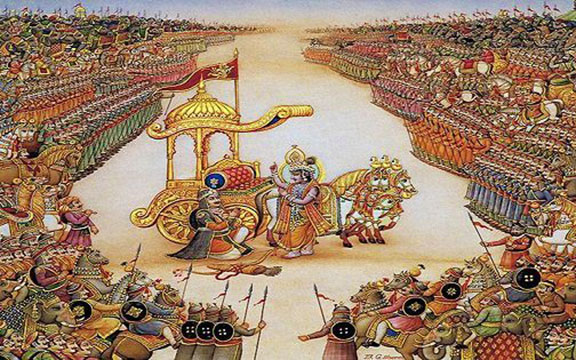
Photo: Arjuna requested Sri Krishna to place the chariot between the two warring sides.
In Part 5 of this series, we went over the first verse of the first chapter. I’d like to skip ahead now to the twentieth verse of the first chapter where Arjuna says to Sri Krishna: “Place my chariot in the middle of the two armies, O Krishna, so that I may behold those who stand here desirous of fighting and know with whom I must fight as the battle is about to commence.”
A big battle is about to take place. It’s a war between the sons of the blind king, and his wife Gandhari, and believe it or not they number 100. They are in battle against the sons of Pandu, the blind king’s brother, and there are five of those brothers called the Pandavas. So, actually, it’s a war between cousins! Sad! But, the esoteric meaning of that is that they’re representing two parts of you and I. These two parts coexist within our same heart: the self-centered part and the altruistic or virtuous part.
The problem is that the self-centered part (represented by the children of Gandhari and the blind king) number 100. But, the Pandavas, the virtuous part, the part that actually cares about others and looks for the unfolding of the soul only numbers five. So it’s a 20:1 ratio. You could say that for every selfless thought we have, we have 20 thoughts of What about me? This means that we tend to be preoccupied with the proverbial “taking care of number one.”
Arjuna is the middle son of Pandu and his wife Kunti. And those who know more about the Mahābhārata know that’s not totally accurate. But to keep things simple for today, let’s say that’s true. The name “Arjuna” means “the one who makes sincere efforts.” So he’s been purified to the point that he has become a genuine seeker and someone who is sincerely trying to understand the purpose of life.
The name “Krishna” comes from the Sanskrit root krish, meaning “to draw.” Sri Krishna represents the Consciousness at the core of our being that is continually drawing us back to the Source. This battle is taking place because the Pandavas have been in exile for 13 years and their exile has just ended. It had been arranged that after the 13-year exile, they would return and reign over a certain part of the kingdom. But, the blind king’s son Duryodhana has reneged on the deal. And there seems to be no option. They did their best but now they have to stand and fight for their right to reign.
You could say that a part of us—you can call it “the soul”—also has been in exile for a long, long time. If you’re reading this, you may sense that after many lifetimes of hard knocks and difficult lessons, the noble part of you is seeking to return to its rightful reign, to being the chief guide of our being and our psyche. And, the Bhagavad Gita is the guidebook on how this conflict—between the part of us that is determined to stay asleep and the part of us that aspires to wake up—is going to be resolved.
My Guru, Swami Satchidananda, says, “This battle didn’t just happen some thousands of years ago. It is constantly happening. It is within each of us.” So the homework assignment for this week, if you would like to join me, is to ask yourself these questions: Do you feel that there is a part of you that’s blind and wants to remain asleep? If so, how does that manifest?
About the Author:
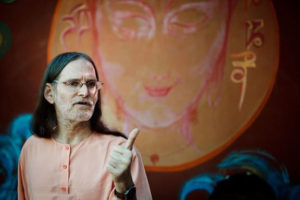 Swami Asokananda, initiated into monkhood in 1973 by Sri Swami Satchidananda, is the spiritual director of Integral Yoga Institute of New York, co-director of the Integral Yoga Global Network, and one of Integral Yoga’s foremost teachers. He is the primary instructor for the Intermediate and Advanced Hatha Yoga Teacher Trainings offered around the world. He has deeply studied the Bhagavad Gita for many decades and is currently writing a commentary.
Swami Asokananda, initiated into monkhood in 1973 by Sri Swami Satchidananda, is the spiritual director of Integral Yoga Institute of New York, co-director of the Integral Yoga Global Network, and one of Integral Yoga’s foremost teachers. He is the primary instructor for the Intermediate and Advanced Hatha Yoga Teacher Trainings offered around the world. He has deeply studied the Bhagavad Gita for many decades and is currently writing a commentary.
The post The Bhagavad Gita in Daily Life: Part 6, The Inner Battlefield appeared first on Integral Yoga® Magazine.
]]>The post Song Divine: The Bhagavad Gita Rock Opera appeared first on Integral Yoga® Magazine.
]]> Lissa Coffey has teamed up with award-winning composer/producer David Vito Gregoli to create “Song Divine: The Bhagavad Gita ROCK OPERA.” Each chapter of the Gita is a song and is for all those who want to memorize the words of the Gita by singing along to the “Song Divine.”
Lissa Coffey has teamed up with award-winning composer/producer David Vito Gregoli to create “Song Divine: The Bhagavad Gita ROCK OPERA.” Each chapter of the Gita is a song and is for all those who want to memorize the words of the Gita by singing along to the “Song Divine.”
Lissa learned so much from the Bhagavad Gita that she wanted others to understand just how rich and wonderful it is, and how much it meant to her.Coffey, an award-winning songwriter, decided to put her skills to work. “Song Divine” is written in verse and rhyme, the way the Bhagavad Gita (translated to “The Song of God” from Sanskrit) was originally intended. It is poetic, taking away the heaviness of trying to decipher the original text and leaving the pure, simple, spiritual truths.
“Song Divine” includes illustrations by acclaimed artist Rajesh Nagulakonda, adding a colorful creative component to the text, as so much can be conveyed through images. “Song Divine” is appealing to all ages, and all cultures. It is a unique blend of east and west, ancient and modern, providing the universal spiritual messages that we so desperately need to hear right now.
This short video, sets up the story of the Gita. After you watch, experience the whole “Song Divine” chapter by chapter, which is available here.
The post Song Divine: The Bhagavad Gita Rock Opera appeared first on Integral Yoga® Magazine.
]]>The post The Bhagavad Gita in Daily Life: Part 5, Unclouding Our Judgment appeared first on Integral Yoga® Magazine.
]]>
Photo: Dhritarāśhtra and Gandhari; Krishna and Arjuna.
In part 4 of this series, we talked about Dhritarāśhtra, the blind king. We can consider him to be manas, the lower mind. And we also talked about Sanjaya, his minister, who we said could be considered our conscience. The king is blind, but he is not deaf. He does want to hear Sanjaya’s input. It’s always a good sign, though maybe rare, when the lower mind asks the conscience to speak up. However, the problem is that upon receiving the input, it is not unusual for our blind ruler to either ignore the input or distort it.
When the ministers were looking for a partner for Dhritarāśhtra, not that many princesses from the neighboring kingdoms were interested in marrying a blind man. Gandhari was okay with it, but she did something unusual. She blindfolded herself so that she wouldn’t have any advantage over her husband. So Gandhari has the capacity to see, but she marries the blind king and chooses to give up her sight.
Gandhari can be considered our buddhi, our inner intelligence. If Gandhari marries the blind king, then four things tend to happen:
- Our intelligence is used to rationalize the benefits of the status quo and why it is dangerous to move outside the boundaries of the known.
- Our intelligence is used to keep the mind moving outward through the senses.
- Our intelligence is used to keep us away from the present moment.
- Our intelligence is used to sabotage our spiritual journey. Because of our blindness we tend to shoot our soul in the foot.
For decades the Bhagavad Gita has been a guide and inspiration in my life. Working on a translation of and commentary on the Gita has enabled me to dive deep into this sacred, living text. Recently, I was working and reflecting on the 18th chapter, the 31st verse. It reads like this: “When the buddhi is rajasic (restless), it has a distorted and confused understanding of dharma and adharma, what’s good for the soul and what puts more obstacles to the soul. Therefore, it often errs in deciding what to do and what not to do.”
The interesting thing that happened to me was while I was working on this verse, I heard the ping of an email arriving. And I normally wouldn’t interrupt this work, but I saw the name of the person, and I said, “Hmm, I would like to see what’s happening.” So I checked the email. And the person was saying I could have done something better and gave me some advice about how to do that. My mind really got worked up, with vrittis flying all over the place. My samskaras presented me all kinds of options about how to react or respond.
Suddenly it struck me that I was supposed to be working on the Gita book. And then a second bolt of lightning struck, and I realized that I just got this amazing lesson from the Guru and the Universe! How easy it is for my buddhi to veer into rajas. As the verse said, when the buddhi is disturbed, it doesn’t know what to do or how to distinguish between dharma and adharma. I’m grateful for such a timely and immediate lesson!
My homework for this week: Recognize when my samskaras, with their pre-conceived notions, are clouding my judgment and pushing me to do something that I am likely to regret later. I invite you, as always, to join me in this homework. Om Shanti.
About the Author:
 Swami Asokananda, initiated into monkhood in 1973 by Sri Swami Satchidananda, is the spiritual director of Integral Yoga Institute of New York, co-director of the Integral Yoga Global Network, and one of Integral Yoga’s foremost teachers. He is the primary instructor for the Intermediate and Advanced Hatha Yoga Teacher Trainings offered around the world. He has deeply studied the Bhagavad Gita for many decades and is currently writing a commentary.
Swami Asokananda, initiated into monkhood in 1973 by Sri Swami Satchidananda, is the spiritual director of Integral Yoga Institute of New York, co-director of the Integral Yoga Global Network, and one of Integral Yoga’s foremost teachers. He is the primary instructor for the Intermediate and Advanced Hatha Yoga Teacher Trainings offered around the world. He has deeply studied the Bhagavad Gita for many decades and is currently writing a commentary.
The post The Bhagavad Gita in Daily Life: Part 5, Unclouding Our Judgment appeared first on Integral Yoga® Magazine.
]]>The post The Bhagavad Gita in Daily Life: Part 4, The Inner Voice appeared first on Integral Yoga® Magazine.
]]>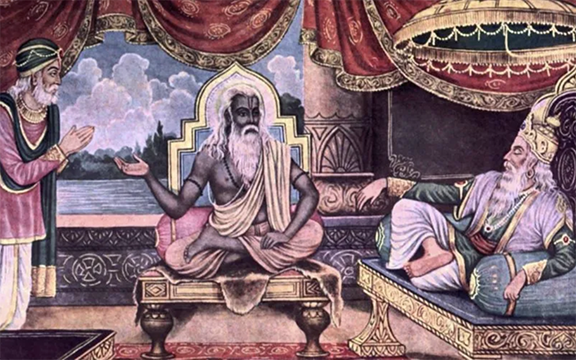
(Photo, L-R: Sanjaya, sage Vyasa and Dhritarāśhtra, the king.)
In Part 3 of this series, we read the first verse of the first chapter, and we were introduced to the blind King Dhritarāśhtra. This week I’d like to introduce us to Sanjaya. Let me share the first verse again:
“Dhritarāśhtra asked, What did the Pāndavās and my sons do when
they assembled on the holy land of Kurukshetra, eager to fight, O Sanjaya?”
Sanjaya is the king’s minister, and the reason the king is asking Sanjaya this question is that Sanjaya was given a boon, this special power by the sage Vyasa of being able to see what’s happening on the battlefield a few miles away. He was also able to know what’s happening in the minds of the people, the combatants there.
Vyasa first offered this boon to the blind king himself. And the blind king thought about it and said, “You know, I haven’t seen my whole life. Do I want to open my eyes and see this carnage, and the battle?” And he declined.
But when Vyasa said, “Well, I could offer it to your minister,” he said, “Okay, that could come in handy if I want to see what’s happening.” So that’s what happened. And Sanjaya, as the king’s minister, is also operating as the king’s conscience. He has to do it in a very delicate, respectful way. He’s trying to help the king to see that it would actually benefit the country if the king surrendered and allowed Arjuna and his brothers, under the guidance of Krishna, to oversee the country.
But the king is still in charge. He can listen to his conscience, but he has to decide whether to follow it or not. It’s a good sign that the king asked his conscience as it’s always a good sign if the blind king within ourselves—the blind ruler—wants to check in with a softer voice within.
Normally the king hears only the voice of the head, which is continually throwing up vrittis, thought waves. Personally, I haven’t found it productive to try to shut that voice down. It may seem counterintuitive, but I like to be the welcomer, the host. And the thoughts are my visitors that come and go. And when I look at things that way, it creates a huge shift and the thoughts seem to have less of a hold over me. And then that other voice, Sanjaya’s voice—the voice of the heart—can be heard more loud and clear.
You’re welcome to join me for the homework assignment this month: Before I make any decision of any importance, I’m going to pause and check in with Sanjaya to see whether my conscience has any guidance for me.
About the Author:
 Swami Asokananda, initiated into monkhood in 1973 by Sri Swami Satchidananda, is the spiritual director of Integral Yoga Institute of New York, co-director of the Integral Yoga Global Network, and one of Integral Yoga’s foremost teachers. He is the primary instructor for the Intermediate and Advanced Hatha Yoga Teacher Trainings offered around the world. He has deeply studied the Bhagavad Gita for many decades and is currently writing a commentary.
Swami Asokananda, initiated into monkhood in 1973 by Sri Swami Satchidananda, is the spiritual director of Integral Yoga Institute of New York, co-director of the Integral Yoga Global Network, and one of Integral Yoga’s foremost teachers. He is the primary instructor for the Intermediate and Advanced Hatha Yoga Teacher Trainings offered around the world. He has deeply studied the Bhagavad Gita for many decades and is currently writing a commentary.
The post The Bhagavad Gita in Daily Life: Part 4, The Inner Voice appeared first on Integral Yoga® Magazine.
]]>The post The Bhagavad Gita in Daily Life: Part 3, Spiritual Blindness appeared first on Integral Yoga® Magazine.
]]> This series continues with part 3, in which we’re going to start at the very beginning. I remember, growing up, Julie Andrews singing in the film The Sound of Music, “A very good place to start . . .” So we’ll start with chapter 1, verse 1 of the Bhagavad Gita. Take a slow, deep breath. Feel your body relaxing, the mind quieting down. Your heart is open. Your spirit’s receptive.
This series continues with part 3, in which we’re going to start at the very beginning. I remember, growing up, Julie Andrews singing in the film The Sound of Music, “A very good place to start . . .” So we’ll start with chapter 1, verse 1 of the Bhagavad Gita. Take a slow, deep breath. Feel your body relaxing, the mind quieting down. Your heart is open. Your spirit’s receptive.
I’ll read you the first verse of the first chapter:
Dhritarāśhtra asked, What did the Pāndavās and my sons do when they assembled on the holy land of Kurukshetra, eager to fight, O Sanjaya?
So let’s talk about who Dhritarāśhtra is. He’s a king. He’s the ruler of the country. He’s also blind, a metaphor in the Gita for spiritual blindness. You can be a good king when you’re a blind man, but his blindness isn’t limited to his physical eyes. His eyes, which represent individual consciousness, also can’t see or at least can’t see straight. So in this country, we have a blind ruler, unfortunately. Blindness represents the fact that even though we’ve read so much and know so much we still tend to look outside for our fulfillment, even though we know that’s not going to happen.
Our tamas (inertia) also blinds us by covering over the inner light. Our rajas (restlessness) pushes us outward and makes us focus outside of ourselves. And we also are blind to how our conditioning is functioning—our samskaras are mostly operating under the surface. They cause us to see things in a filtered and distorted way and then we react to what we see in a preprogrammed way, with deeply ingrained patterns. And this kind of seeing is actually worse than blindness. A blind person at least knows they can’t see, but we think that we’re seeing reality when it’s just not so.
So I gave myself a homework assignment for the week that I’ll share with you and encourage you to take on as well. This week I’m going to focus on the fact that my point of view may not be truly objective. I’m going to listen more deeply to different points of view and watch my reactions when people see things differently from the way I do.
About the Author:
 Swami Asokananda, initiated into monkhood in 1973 by Sri Swami Satchidananda, is the spiritual director of Integral Yoga Institute of New York, co-director of the Integral Yoga Global Network, and one of Integral Yoga’s foremost teachers. He is the primary instructor for the Intermediate and Advanced Hatha Yoga Teacher Trainings offered around the world. He has deeply studied the Bhagavad Gita for many decades and is currently writing a commentary.
Swami Asokananda, initiated into monkhood in 1973 by Sri Swami Satchidananda, is the spiritual director of Integral Yoga Institute of New York, co-director of the Integral Yoga Global Network, and one of Integral Yoga’s foremost teachers. He is the primary instructor for the Intermediate and Advanced Hatha Yoga Teacher Trainings offered around the world. He has deeply studied the Bhagavad Gita for many decades and is currently writing a commentary.
The post The Bhagavad Gita in Daily Life: Part 3, Spiritual Blindness appeared first on Integral Yoga® Magazine.
]]>The post The Bhagavad Gita in Daily Life: Part 2, Sanatana Dharma appeared first on Integral Yoga® Magazine.
]]> I would like to continue this series with a little more background and history to set the stage and context for our study of the Bhagavad Gita. Throughout the ages people, probably throughout the planet, maybe possibly other planets, went deep into the mind, transcended the mind, and found a true reality. In India this was mostly passed on by word of mouth from Guru to disciple. Eventually, after probably hundreds of years, somebody started writing these things down. And then someone collected them, and that collection became known as the Vedas.
I would like to continue this series with a little more background and history to set the stage and context for our study of the Bhagavad Gita. Throughout the ages people, probably throughout the planet, maybe possibly other planets, went deep into the mind, transcended the mind, and found a true reality. In India this was mostly passed on by word of mouth from Guru to disciple. Eventually, after probably hundreds of years, somebody started writing these things down. And then someone collected them, and that collection became known as the Vedas.
The Vedas are divided into two sections—the karma-kanda, which is the action section, and the jnana-kanda, which is the knowledge or wisdom section. The karma-kanda deals with how to lead a secure, pleasurable life, but mostly with an eye to reaching a higher level, which we can call heaven. The jnana-kanda is working with the knowledge, wisdom and spirituality. The culture that grew up around these teachings took place originally in North India, the Indus Valley. And they called it sanatana dharma, the eternal truth, the eternal way. Later, when the British occupation occurred, since they were in the Indus Valley they called the people the “Hindus,” and that’s where the term came from. But the true essence of Vedic and Yoga teaching is really sanatana dharma. It’s very broad thinking. You can believe God had form. If you believed God was with form, you could choose the form—whichever form you were most drawn to. You could also believe God had no form and was an all-pervading underlying Consciousness. There was no need to believe in a “Creator God” in sanatana dharma.
The essence of sanatana dharma, or the essence of the Vedas, is called Vedanta—the end of the Vedas. In Sanskrit, “ve” means “without, “danta” means “teeth.” In other words, when you’re old and gray and can’t chew your food well, that’s when you would study these teachings. But, that’s probably too late, so it’s best not to understand Vedanta in that way! You need to have some energy to practice Vedanta. The essence of Vedanta in 700 verses is called the Bhagavad Gita.
Before the Bhagavad Gita starts, there are nine verses called the Gita Dhyanam, or the meditation on the Gita. These verses are designed to help prepare the mind for the study of the Gita. And to prepare the mind I can think of three things that these verses do:
- They help us to be more focused, concentrated, undistracted, so we put our full attention in the Gita study.
- They help us to humble our ego so that we get more attuned and aligned with Sri Krishna’s teachings.
- They prepare the mind by giving us faith, so that when we’re studying the Gita, we’re studying not just with our head but with our heart.
In The Living Gita, Swami Satchidananda’s commentary on the Gita, he lists just a few of the nine verses of the Gita Dhyanam, which are so inspiring and so I have memorized these:
OM, O Bhagavad Gita, by which Arjuna was illumined by Lord Krishna himself and which was composed of eighteen chapters
within the Mahabharata by the ancient sage Vyasa;
O Divine Mother, Destroyer of rebirth, who showers the nectar of oneness on us;
O Bhagavad Gita, my affectionate Mother, on Thee I meditate.
All the Upanishads are the cows, the milker is the cowherd boy, Krishna;
Arjuna is the calf; people of purified intellect are the drinkers; the milk is the supreme nectar of the Gita,
My salutations to the Lord who is the source of supreme bliss, whose grace makes the mute eloquent and the crippled cross mountains.
There are a few key points these verses highlight:
o The Gita is composed of 18 chapters within the Mahābhārata by the ancient sage Vyāsa…so the Bhagavad Gita is 700 verses from this sacred epic poem.
o It says, O Bhagavad Gita, “my affectionate mother, on Thee I meditate.” I like that. The Sanskrit word used is “Amba,” meaning “Divine Mother,” “Affectionate Mother.” This Mother is very patiently lifting Arjuna and us up, elevating us.
o Chapter by chapter, we’re moving further along the spiritual path.
o It also says “O Divine Mother, Destroyer of rebirth, who showers the nectar of oneness on us.” So the Bhagavad Gita showers a nectar of oneness on us. The nectar is that if there’s only oneness, there’s no one and no thing to be afraid of.
I would like to close this article with a quote from Mahatma Gandhi:
“When doubts haunt me, when disappointments stare me in the face and I see not one way of hope on the horizon, I turn to the Bhagavad Gita and find a verse to comfort me and immediately begin to smile in the midst of overwhelming sorrow. Those who meditate on the Gita will derive fresh joy and new meaning from it every day.”
About the Author:
 Swami Asokananda, initiated into monkhood in 1973 by Sri Swami Satchidananda, is the spiritual director of Integral Yoga Institute of New York, co-director of the Integral Yoga Global Network, and one of Integral Yoga’s foremost teachers. He is the primary instructor for the Intermediate and Advanced Hatha Yoga Teacher Trainings offered around the world.
Swami Asokananda, initiated into monkhood in 1973 by Sri Swami Satchidananda, is the spiritual director of Integral Yoga Institute of New York, co-director of the Integral Yoga Global Network, and one of Integral Yoga’s foremost teachers. He is the primary instructor for the Intermediate and Advanced Hatha Yoga Teacher Trainings offered around the world.
The post The Bhagavad Gita in Daily Life: Part 2, Sanatana Dharma appeared first on Integral Yoga® Magazine.
]]>